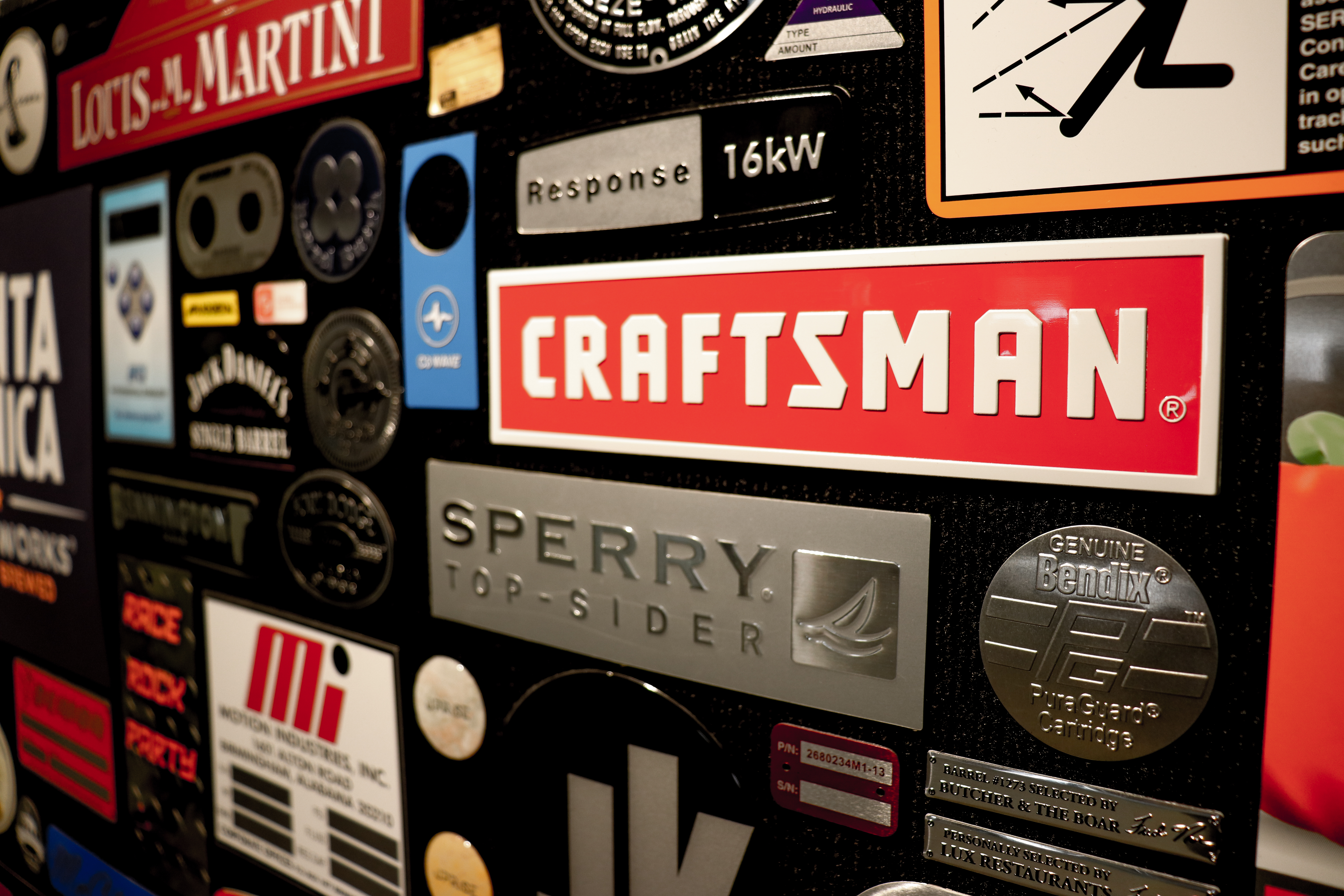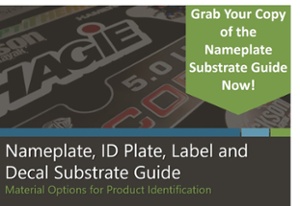Tooling Options for an Embossed Metal Nameplate
One of the key considerations to make when designing an embossed metal nameplate, badge or emblem is the type of tool you want to use. Each type has its own capabilities and advantages, from up-front cost to lead time to the level of detail that can be captured. The two types of tooling that we will be comparing in today’s blog are hardened steel tooling and low cost tooling for metal.
Hardened Steel Tooling for Metal Nameplates
Hardened steel tooling allows for high precision embossing for your custom metal nameplate. The rigid nature of the tool allows for more defined edges, which results in a crisper design that can accommodate finer details. Hardened tooling can feature characters with a stroke width as small as 0.010” with an equally small spacing between characters.
Considerations in choosing hardened steel tooling for metal nameplate lies mostly in the up-front investment cost and slightly longer lead times. The cost of a hardened steel tool can range vastly depending on the complexity of your design and the size of your metal nameplate. Since the process of creating steel tooling is much more intensive than low cost tooling, lead times can range from anywhere to 3-4 weeks and result in higher costs. Ultimately, costs and lead times can vary greatly depending on the complexity of your final design.
The tradeoff is that by investing more time and money into the beginning stages of developing a steel tool, metal nameplates with impressive definition can be produced with a tool that can withstand a much longer use.
Low Cost Tooling for Metal Nameplates and Badges
Low cost tooling serves as an alternative solution for embossed metal nameplates. Unlike steel tooling, low cost tooling can be produced in as little as one week or less. These quick lead times allow us to offer this tooling option at a much more affordable price, typically less than $500.
Low cost tooling does not offer the same degree of detail and precision that steel tooling does. While steel tooling features more defined edges, low cost tooling has rounded edges that result in softer features on the final embossed metal nameplate. There is a higher minimum stroke width and spacing requirement for low cost tooling: 0.015” and 0.030”, respectively.
Low cost tooling is a good option for those less concerned with the crispness of their design, or for those who are looking to order a smaller quantity of embossed metal nameplates.
If one type of tooling has more appeal to you than the other, the creative art team here at McLoone can help you adjust your design to accommodate either type of embossing. Reach out today to discover what McLoone can do for you!



